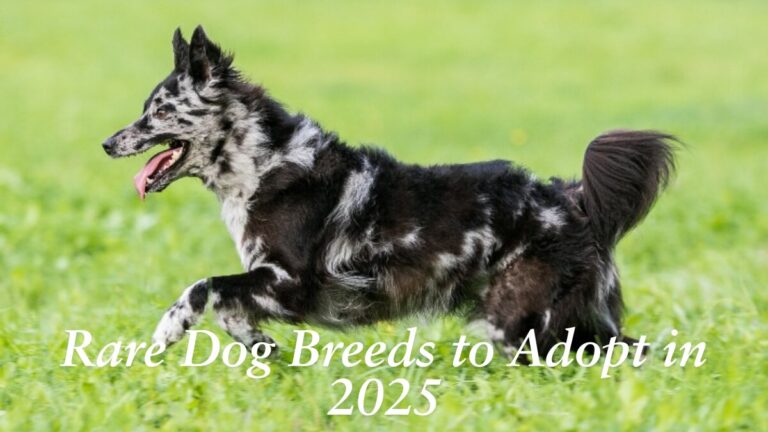Introduction:
The “Breed White Dog” encompasses a variety of canine breeds characterized by their striking white coats, each with unique traits and personalities. From the playful American Eskimo Dog to the elegant Maltese, these breeds not only capture attention with their beauty but also bring joy and companionship to families. In this article, we will explore the most popular white dog breeds, their care requirements, and what makes them ideal companions for dog lovers.
Why Choose a White Dog Breed?
White dogs are often chosen for their striking and pristine coat, but they also come with distinct temperaments and behaviours that make them stand out. Owners often find white dogs to be gentle, friendly, and intelligent, making them great family pets. Additionally, many white breeds are hypoallergenic, which is a big advantage for individuals prone to allergies. Whether it’s their beautiful coats or lovable nature, white dogs offer several benefits, including companionship, loyalty, and adaptability. These dogs tend to blend well into a variety of environments, including small apartments or large houses.
Popular White Dog Breeds
There are many famous white dog breeds, each with its unique characteristics and history. From the majestic Samoyed to the friendly Bichon Frise, white dog breeds offer a wide variety of choices to suit different preferences and lifestyles. Understanding the unique features of these breeds will help you choose the right dog for your family. Below are some of the most popular white dog breeds:
Samoyed
Samoyeds are known for their thick, fluffy white coat and friendly, social nature. Originating from Siberia, Samoyeds were originally bred to herd reindeer and pull sleds. Their beautiful white coat isn’t just for show; it helps them withstand extreme cold temperatures. Samoyeds are playful, active, and affectionate, making them excellent family pets. However, due to their dense fur, they require regular grooming to prevent matting and shedding.
Bichon Frise
The Bichon Frise is a small, fluffy white dog that is loved for its cheerful and gentle demeanour. These dogs have a hypoallergenic coat, which makes them perfect for people with allergies. Bichons are known for their playful personality and get along well with children and other pets. Despite their small size, they have big personalities and are excellent companions. Their curly coat requires regular grooming, including brushing and trimming.
Maltese
Maltese dogs are small yet full of elegance with their long, flowing white coats. This breed has been around for centuries and has been associated with royalty. The Maltese is gentle, affectionate, and thrives on human interaction. Due to their size, they are perfect for apartment living. Regular grooming is essential to keep their coat clean and free of tangles. Despite their delicate appearance, they are lively and enjoy playtime.
Great Pyrenees
The Great Pyrenees is a large, strong dog breed known for its protective nature and thick white coat. Originally bred to guard livestock, they are calm and loyal, making them excellent watchdogs and family pets. Their independent nature means they may not always follow commands right away, but their devotion to their family is unquestionable. The Great Pyrenees need space to roam and regular grooming to maintain their coat.
Care Tips for White Dog Breeds
Owning a white dog comes with specific responsibilities, especially when it comes to grooming and maintaining their coat. The bright, white coat can easily show dirt and stains, making grooming a priority for white dog owners. In addition to keeping their coat clean, other factors like diet, exercise, and training play a vital role in the well-being of white dog breeds.
Grooming Essentials
White dog breeds require regular grooming to maintain their appearance. This involves bathing, brushing, and ensuring their fur stays clean and free from mats. Depending on the breed, some dogs may need daily brushing, while others can be brushed a few times a week. Using a gentle shampoo formulated for dogs will help keep their coat clean without irritating their skin. Additionally, keeping their eyes and ears clean will prevent staining, especially in breeds like the Maltese.
Diet and Nutrition
A balanced diet is essential for maintaining the health of white dog breeds. The quality of food you provide will directly impact their coat, skin, and overall health. Feeding them high-quality dog food rich in omega-3 fatty acids and vitamins can help keep their coat shiny and reduce shedding. Providing the right amount of protein, fats, and carbohydrates will ensure that they have the energy they need for their daily activities. Always consult with your veterinarian to choose the best food for your dog’s breed and age.
Exercise and Mental Stimulation
Most white dog breeds, especially those like the Samoyed and Great Pyrenees, require a significant amount of physical and mental stimulation. Regular exercise is important to keep them healthy and prevent behavioural issues. Daily walks, playtime, and mental stimulation such as puzzle toys or training sessions will keep them engaged and happy. Dogs like the Bichon Frise and Maltese also benefit from regular exercise but may not need as much physical activity as larger breeds.
Training and Socialization
Training your white dog from an early age is crucial for developing good behaviour and social skills. White dog breeds, whether small or large, need consistent training to understand commands and behave appropriately around people and other animals. Positive reinforcement techniques, such as treats and praise, are effective in training most dogs. Socialisation is equally important; exposing your dog to different environments, people, and other pets will ensure that they grow up to be well-adjusted and confident.
White Dog Breed Health Considerations
While white dogs are often adored for their beauty, they can be prone to certain health issues that owners need to be aware of. White coat pigmentation can sometimes be linked to hearing problems, such as deafness, especially in breeds like the Dalmatian. Additionally, white dogs may have sensitive skin, making them more susceptible to sunburn or irritation. It’s essential to protect their skin and provide the right care to avoid these issues.
Hearing Issues in White Dogs
Some white dog breeds are more prone to congenital deafness, particularly those with a genetic predisposition. Dalmatians, for example, have a higher risk of being born deaf in one or both ears due to the lack of pigmentation in their inner ear. Regular hearing tests, starting from when they are puppies, are recommended to detect any hearing loss early. Training deaf dogs requires special methods, such as using hand signals instead of verbal commands.
Skin Sensitivities
White dogs often have more sensitive skin compared to dogs with darker coats. Their skin may be prone to irritation, sunburn, or allergic reactions, so it’s important to provide adequate sun protection, especially if your dog spends a lot of time outdoors. Using pet-friendly sunscreens or limiting their exposure to direct sunlight can help protect their skin. Additionally, regular grooming, including moisturising shampoos, can help prevent skin dryness or irritation.
Eye Stains and Tear Marks
One common issue in white dog breeds, especially those with longer coats, is tear staining. Tear stains can appear around the eyes due to excessive tearing or allergies. Regular cleaning around the eyes with a damp cloth and using tear stain removers can help reduce the appearance of these stains. Providing clean water and maintaining a proper diet also contributes to minimising tear marks in dogs like the Maltese or Bichon Frise.
Finding the Right White Dog for Your Lifestyle
Choosing the right white dog breed for your lifestyle involves considering factors such as size, activity level, grooming needs, and temperament. Some white dog breeds are more suited for active individuals or families with children, while others may be perfect for a quieter household. Researching each breed’s needs and matching them with your living situation and preferences will ensure that you find the ideal canine companion.
Small White Dog Breeds for Apartments
For those living in smaller spaces or apartments, small white dog breeds like the Maltese or Bichon Frise can be a great fit. These dogs adapt well to indoor living and don’t require as much space to roam. However, they still need regular exercise and mental stimulation to stay happy. Their friendly nature and size make them well-suited for apartments, but grooming should be a priority due to their white coats.
Large White Dog Breeds for Active Families
If you have a larger space or an active family, bigger white dog breeds like the Samoyed or Great Pyrenees might be the perfect fit. These dogs enjoy physical activities and need ample space to run and play. They are great companions for hiking, jogging, and outdoor adventures. However, due to their size, they may not be ideal for small apartments or homes with limited space.
Conclusion
Choosing a white dog breed comes with many advantages, from their striking beauty to their lovable and loyal nature. Whether you prefer small breeds like the Maltese or larger dogs like the Samoyed, white dog breeds offer something for everyone. With proper care, grooming, and attention to their specific needs, your white dog will be a wonderful companion for years to come. As you consider adding a white dog to your family, take the time to research the breed that best fits your lifestyle and ensure you’re prepared to meet their unique needs.
FAQ:
Are white dog breeds more prone to health issues than other dogs?
White canine varieties can be more defenceless to specific medical problems, however it relies upon the variety. One normal issue is innate deafness, especially in breeds like Dalmatians, where absence of pigmentation in the inward ear can lead to hearing issues. Furthermore, white canines might have more delicate skin, which can make them inclined to sun related burn or skin aggravation. Normal veterinary check-ups, appropriate prepping, and skin security can help forestall and deal with these potential medical problems.
How do I keep my white dog’s coat clean and free from stains?
Keeping up with the perfect layer of a white canine requires reliable prepping. Normal brushing forestalls soil development and matting, while routine showers with a canine accommodating cleanser will keep their jacket clean. For tear messes or stamps around the eyes, cleaning the region with a sodden fabric and utilising tear smudge removers can assist with diminishing staining. Moreover, giving clean drinking water and a fair eating routine adds to limiting tear stains and keeping their jacket looking new.




